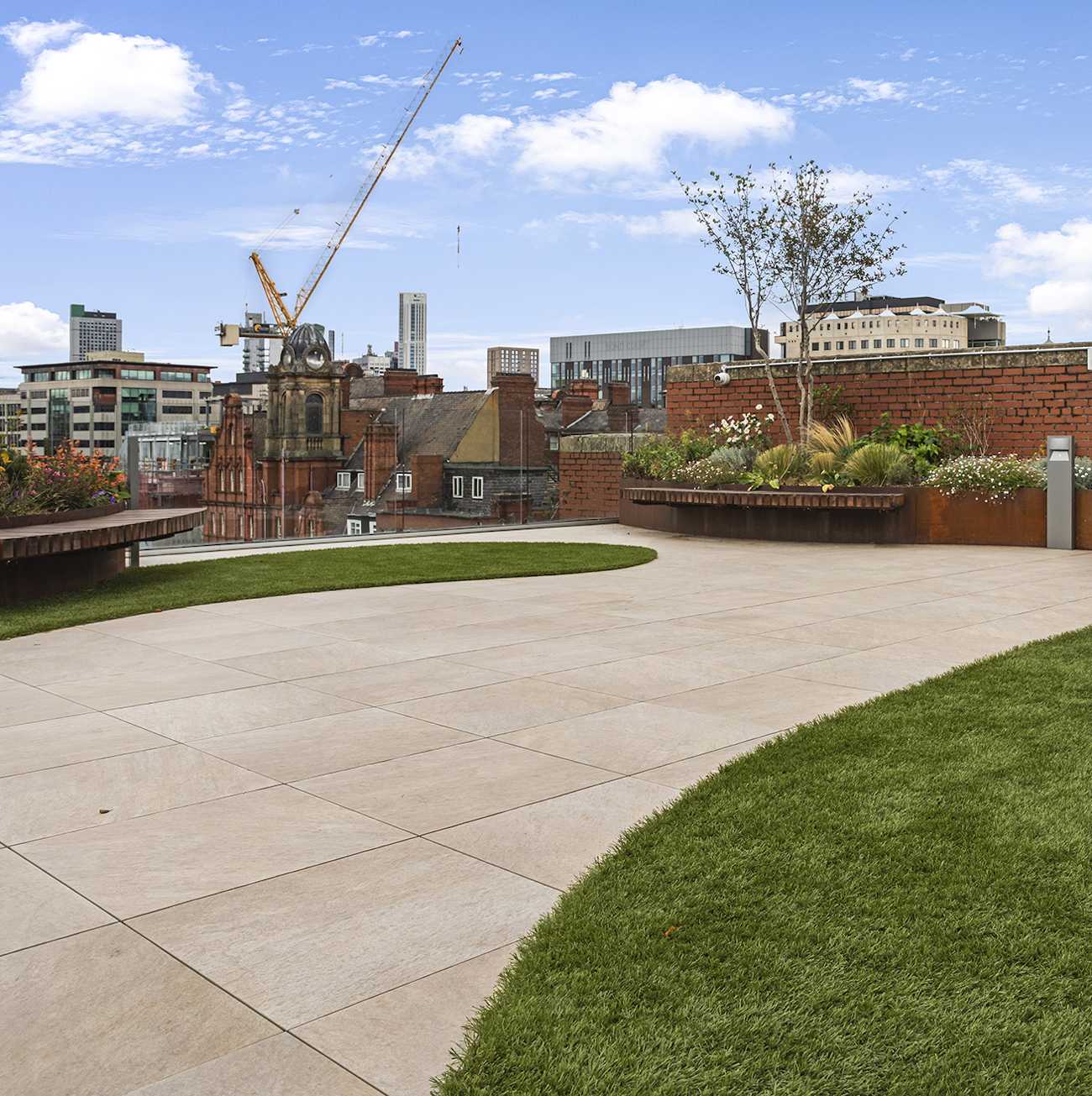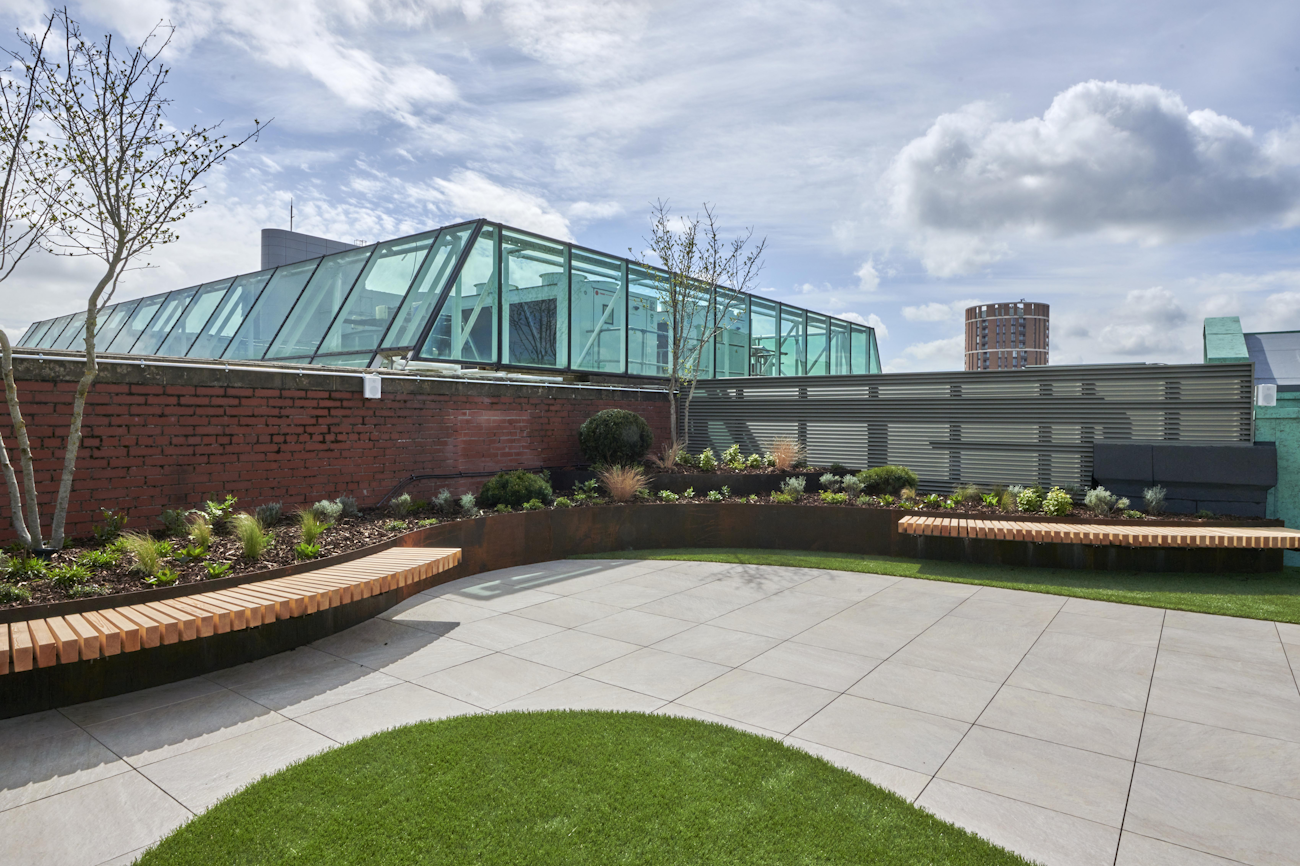Porcelain vs. Aluminium Decking: What’s Better & Why

In this blog post we will compare two widely-used alternatives to timber and composite decking – powder-coated aluminium panels and porcelain tiles – and discuss the pros and cons of each.
The need for fire-rated decking products
Following the Grenfell fire in 2017 the UK Government introduced the Building (Amendment) Regulations 2018 relating to the use of fire-rated materials on high-rise residential buildings. While the primary cause of the fire was substandard cladding, the new regulations cover all materials used on building exteriors, including balconies and roof terraces.
This immediately put an end to timber and composite decking, forcing architects and developers to look for fire-rated alternatives that are strong, lightweight, durable and weatherproof.

Aluminium Decking
As extruded aluminium is strong, lightweight and extremely durable, it has become a popular material for decking. A powder-coated finish adds to its appeal as it can be colour matched to complement its surroundings.
At a distance, aluminium decking gives the impression of painted timber decking and its uniform colour creates a sleek, modern look.
On the downside, aluminium decking has no surface texture or pattern and this can be a disadvantage if a more natural, organic look is required. While the powder coating is designed to be durable, such a uniform surface is also likely to be less forgiving of slight scratches.
Porcelain Decking
Porcelain is an equally durable product with an excellent fire-rating, and porcelain decking and tiles are available in a wide range of finishes that authentically mimic the subtle colour variations and textures of natural stone or timber.
This makes porcelain a more popular option for traditional and heritage locations, but also bringing cool sophistication to ultra-modern environments. Take a look at the selection of finishes offered by Raaft, for example.
Their stone-effect porcelains range from the warm, traditional tones of Roma Natural (this wouldn’t look out of place in a Cotswold garden) to the pale sophistication of Asti Talc and Asti Taupe. Deeper, moodier tones can be achieved with Asti Carbon, lightened up with Roma Lead or given added warmth with Roma Copper.
If a wood-effect porcelain is preferred, Milano Box offers the warm grey tones associated with driftwood while Milano Age gives a warmer but equally worn-in look. More contemporary designs may be better complemented by Como Honey or its slightly deeper cousin Como Brown.
Porcelain decking is also better suited to architectural design that blurs the lines between indoor and outdoor living, as its natural style looks equally at home indoors.
The best decking product for you

Powder-coated aluminium and porcelain perform equally well in terms of durability. The slight texture of porcelain may offer better slip-resistance when wet, but they both meet the required fire ratings for high-rise buildings and are both long-lasting, low-maintenance options. In terms of performance, there is little to choose between them.
Deciding which is the best decking product for your design therefore largely comes down to design aesthetics and personal preference.
If you choose porcelain decking, Raaft supply the complete system for balconies and roof terraces, starting with the support structure. This includes pedestals to raise the deck to the required height and ensure an even, well-drained surface, and extruded aluminium joists to create a solid framework for the tiles.
Raaft planter systems also give the option of including straight or curved planters, with or without benches, as an integral component of the design.
As a leading UK designer and manufacturer of roof terrace and planter systems, roof decking and tiles, Raaft can assist you at every stage of the design, specification and installation process. To discuss your ideas with Raaft, contact us on +44 (0)20 3146 7879 or at [email protected] Alternatively, send us a message via our website enquiry form and one of our technical support team will respond promptly.